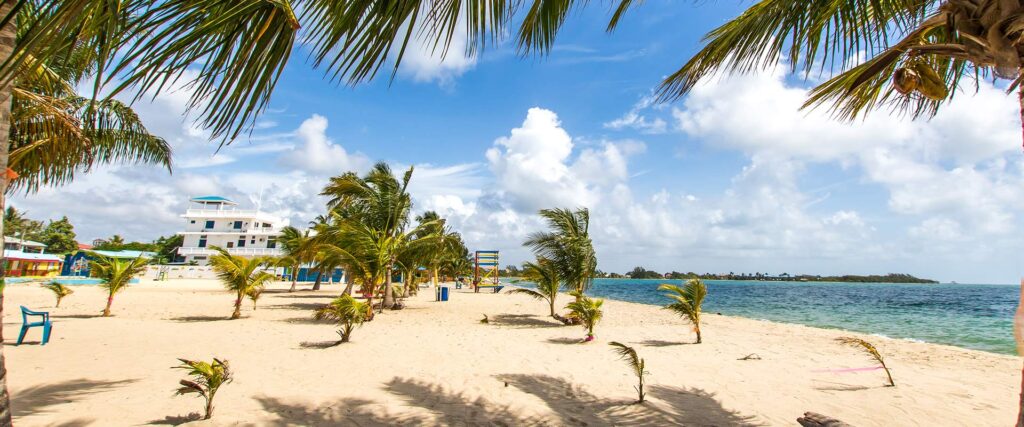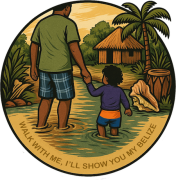Why Is Travelling So Important in Life?
A Generational Timeline of Seasons, Trends, and Meaning
Travel may look different in every era, but the question “Why is travelling so important in life?” keeps coming back. The truth is, travel is never just movement. Sometimes it’s transactional — a ticket, a package, a quick escape. Other times it’s transformational — a journey that changes how you see yourself, your family, or the world.
Here’s how travel has mattered across generations — and why it still matters today.
1. Ancient & Indigenous Travel: Movement as Survival and Spirit
For early peoples, travel wasn’t optional — it was life. Hunters followed herds, traders carried obsidian, cacao, and salt, and Maya pilgrims walked to sacred caves and mountains (the Witz, living hills).
- Transactional: bartering goods, reaching water, finding food.
- Transformational: entering caves like Xibalba or climbing sacred hills — journeys that reshaped identity and belief.
In Belize, the rivers were the highways. Dugout canoes on the Macal or Mopan carried not just pottery and food, but also memory and meaning.
2. Medieval & Early Civilizations: Pilgrimages and Conquests
In this age, travel meant devotion or power. Pilgrims walked across continents to holy shrines, enduring hardship for spiritual reward. At the same time, armies marched to conquer lands.
- Transactional: control of land, trade, resources.
- Transformational: the deep reshaping of identity through pilgrimage and encounter.
Belize’s echoes: Maya resisted Spanish incursions, Garifuna ancestors endured forced migrations before finding refuge along Belize’s southern shores. For them, travel was survival — but it also became resilience and rootedness.
3. Age of Exploration (1400s–1700s): Curiosity, Colonization, and Extraction
Europeans mapped new oceans, though the lands were never empty. Maps expanded, but so did exploitation.
- Transactional: extraction of logwood, trade routes, slave voyages. Belize’s forests became commodities.
- Transformational: for Europe, a changed worldview — but at immense cost to the peoples encountered.
In Belize, Africans arrived through forced movement, the Maya retreated inland to survive, and the Baymen staked claims along the coast. Travel equaled displacement for some, opportunity for others.
4. Industrial Age (1800s): The Birth of Leisure Travel
Steamships, trains, and later automobiles created a new category: travel for pleasure. The wealthy invented the European “Grand Tour,” while seaside holidays became fashionable.
- Transactional: hotel rooms, package routes, carriages, and ships.
- Transformational: exposure to cultures and landscapes once unreachable.
In Belize, travel centered on colonial elites. Shipping lines brought officials and adventurers; Belize City hotels hosted their stays. Travel was tied to commerce, but small seeds of leisure began to appear.
5. 20th Century: The Rise of Mass Tourism
Airplanes and cruise ships turned vacations into an industry. Travel became normalized.
- Transactional: the golden age of agencies selling bundles — airfare, hotel, sightseeing in one deal.
- Transformational: for many families, their first airplane ride, first beach trip, first encounter with another culture.
In Belize, San Pedro grew from fishing village to diving capital. Cruise ships anchored off Belize City. For some, Belize became a one-day postcard; for others, a reef to fall in love with.

6. Late 20th Century: Backpackers, Ecotourism, and Authenticity
Young travelers started seeking roads less traveled: hostels, backpacks, hitchhiking. At the same time, eco-consciousness grew.
- Transactional: cheap adventures, guidebook checklists, country-counting.
- Transformational: camping in a rainforest, volunteering on a farm, finding belonging in simple encounters.
Belize mirrored this shift: the Cockscomb Jaguar Preserve, ATM Cave explorations, and guesthouses in Placencia and San Ignacio gave travelers a way to connect with culture and conservation.
7. Early 21st Century: Meaning Over Material
The internet disrupted travel. Suddenly anyone could book flights and rooms directly. Airbnb and blogs created endless choice.
- Transactional: flight deals, influencer bucket lists, Instagram hotspots.
- Transformational: slow travel, yoga retreats, gap years, voluntourism.
In Belize, small eco-lodges, community tourism, and reef-jungle combo trips expanded ways to go deeper — beyond just seeing to actually connecting.
8. Today (2020s–2025): The Transformational Era
The pandemic forced a pause, and when the world reopened, the way people traveled changed. Now travelers want wellness, care, and reconnection, not just escape.
- Transactional: still alive — a quick cruise stop, a selfie at the Blue Hole, a packaged resort week.
- Transformational: growing stronger — regenerative tourism, heritage journeys, “coolcations,” Travel ASMR, and trips designed to heal.
For my own family, this is real. We travel for family visits, but when we choose just for ourselves, we head to nature. We crave the quiet after the city’s noise, the clean air that feels like medicine, and the simple joy of leaving behind tablets and traffic. Whether it’s a river bend in Cayo, a mountain slope in the Maya range, or a breezy cay off Placencia, the fresh air is always a welcoming change of scenery.
That is where travel becomes more than a transaction. The bus ticket or fuel cost may be the price, but the reward is transformation: a reset of spirit, a reminder of balance, a return to what matters.
9. Tomorrow: New Frontiers, Same Question
Space travel is already booking seats. AI is writing itineraries. Virtual reality may compete with reality itself.
But no matter the tools or technology, every generation will keep asking:
Why is travelling so important in life?
And the answer will remain: because travel is one of the few human acts that can be both transactional and transformational, often at the same time.
Final Reflection
From Maya canoes to AI itineraries, from pilgrimages to coolcations, the thread is unbroken. Travel has always mattered — sometimes as survival, sometimes as escape, sometimes as healing.
It changes shape with each generation, but its essence is constant: to move us not only across land and sea, but within ourselves.
